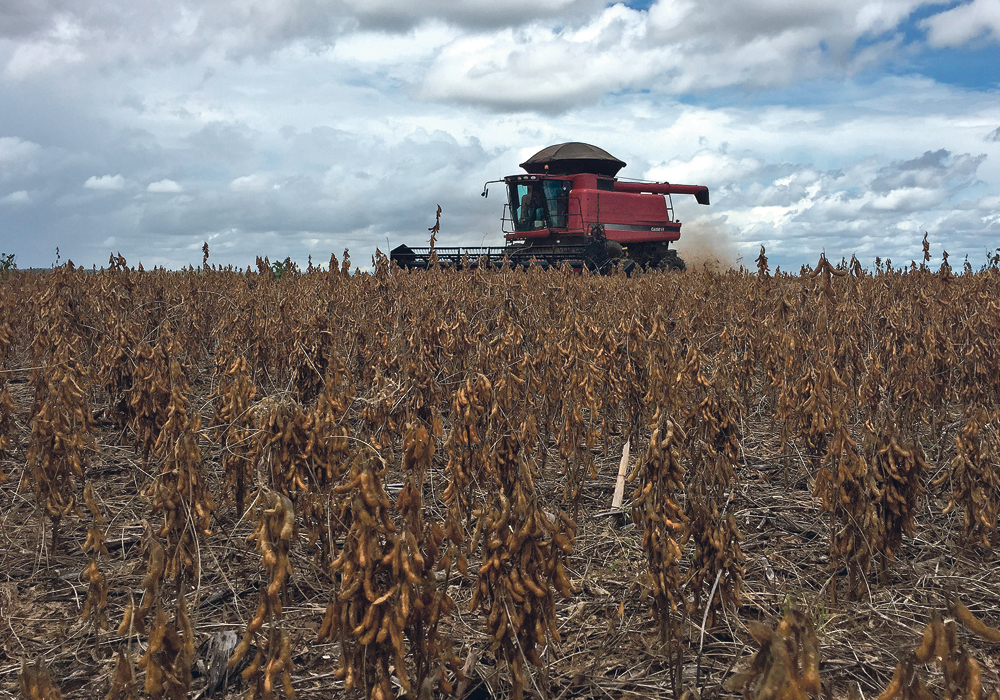This year’s La Nina is producing the kind of impacts we’d expect with dry weather in parts of South America and the southern United States and increased rain in Australia.
That is the classic scenario of a La Nina, which is a cooling of water in the equatorial region of the Pacific Ocean.
Southern Brazil, Uruguay and northern Argentina are dry, causing farmers in those regions to worry about their soybean and corn crops as the calendar in the Southern Hemisphere shifts to summer.
Read Also

Farm groups ask feds for export sales reporting
The Agricultural Producers Association of Saskatchewan and SaskCrops asks the federal government to create an Export Sales Reporting program.
The area affected in Brazil accounts for about 40 percent of soybean production. But importantly the other 60 percent farther north is in good shape with adequate moisture.
Seeding finished early and some parts of the country are hoping for an early harvest, unlike last year when slow seeding led to an unusually late harvest and a delay seeding the large second corn crop, which was slammed by drought in March and April.
Continuing dry weather is expected in Brazil’s southern region. Over the coming weeks the question will be whether the hope for above average yields in the north will outweigh yield damage in the south.
Brazilian forecaster Conab was optimistic in its report last week, estimating the corn crop at 117.18 million tonnes, a four percent increase over last year, thanks to a 3.7 percent increase in acres and a slight increase in average yield.
Conab sees the first corn crop at slightly more than 29 million tonnes, or about a quarter of the total annual production.
Michael Cordonnier of Soybean and Corn Advisor, Inc., noted that private analysts dispute the optimistic corn estimate, saying the dry weather likely has already sapped yield by 10 to 20 percent.
In Argentina, crop conditions are good considering the dry weather in northern areas. The most important growing region is in the centre of the country where moisture is better.
The Buenos Aires grain exchange recently increased its corn production forecast to a record 57 million tonnes.
To recap, the Brazilian and Argentine government forecasts are optimistic despite the dry regions, but they are only now entering summer and the presence of the La Nina continues to cause concern.
Across the Pacific, Australia harvested big wheat and canola crops thanks to good La Nina rain. Downpours at harvest might have downgraded quality and protein in some areas.
But production is high. The United States Department of Agriculture last week raised its estimate of Australian wheat to 34 million tonnes, up from 31.5 million last month and local forecasts think it might even be higher.
The Australian crop boost was the main reason world wheat production and ending stocks forecasts rose. That caused Chicago soft wheat futures to dip a little last week but the Minneapolis hard red spring contract was little changed.
Crop markets generally have slipped since the appearance of the new COVID variant Omicron now spreading around the world.
The La Nina also can affect North America. It can lead to dry weather in the southern plains hard red winter wheat region.
The USDA’s year-end national weekly crop rating put the good to excellent portion at 44 percent, the second worst since 2010.
The wheat crop is now dormant. The national ratings begin again in April, but individual states provide updates monthly through the winter.
A substandard rating at dormancy does not guarantee a poor U.S. crop, but it does highlight the need for good rainfall next spring and at this point, the long range computer models show potential for the region to have below normal moisture in April.
Another non-weather factor that could affect crop prices is Russia’s sabre rattling on the Ukraine border.
Russia has sent more than 150,000 troops and weaponry to the area as Russian president Vladimir Putin attempts to stop the Ukrainian government’s embrace of the West.
In 2014, Russian troops took Crimea and assisted two eastern provinces to break away from the Kyiv government. A low level conflict has simmered since.
Ukraine and Russia are major grain exporters and the violence in 2014 raised global corn and wheat prices for a while. The market worried Ukraine farmers would not get credit and a steep drop in the value of its currency increased the cost of imported inputs.
Ultimately the fighting was limited to the eastern provinces and Ukraine’s grain production was normal and exports continued. Russia also avoided disruption to its grain industry.
Both countries have increased exports since 2014.
The build-up of Russian forces on the border this year is much larger than it was in 2014.
If a major Russian-Ukraine conflict were to erupt it would impact the grain trade in many ways. It would likely shake up the global economy, endanger Europe’s energy imports from Russia and lead to all sorts of trade restrictions.















